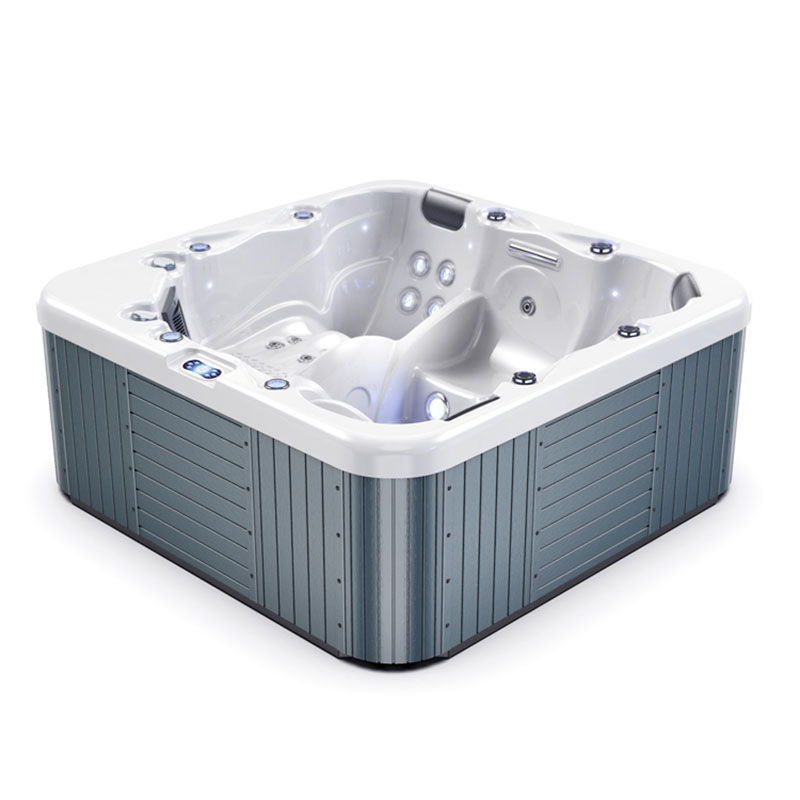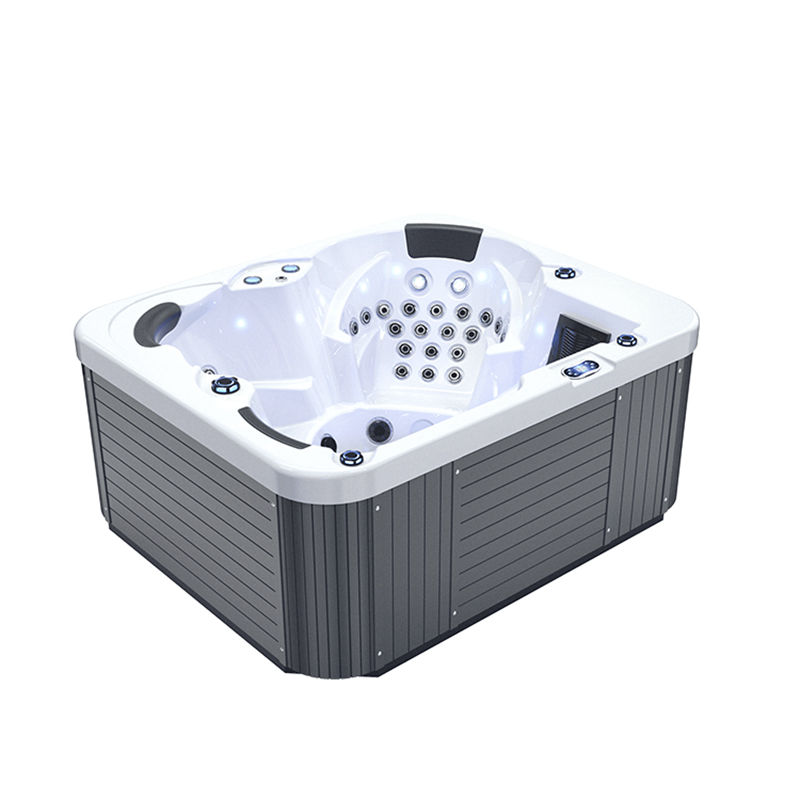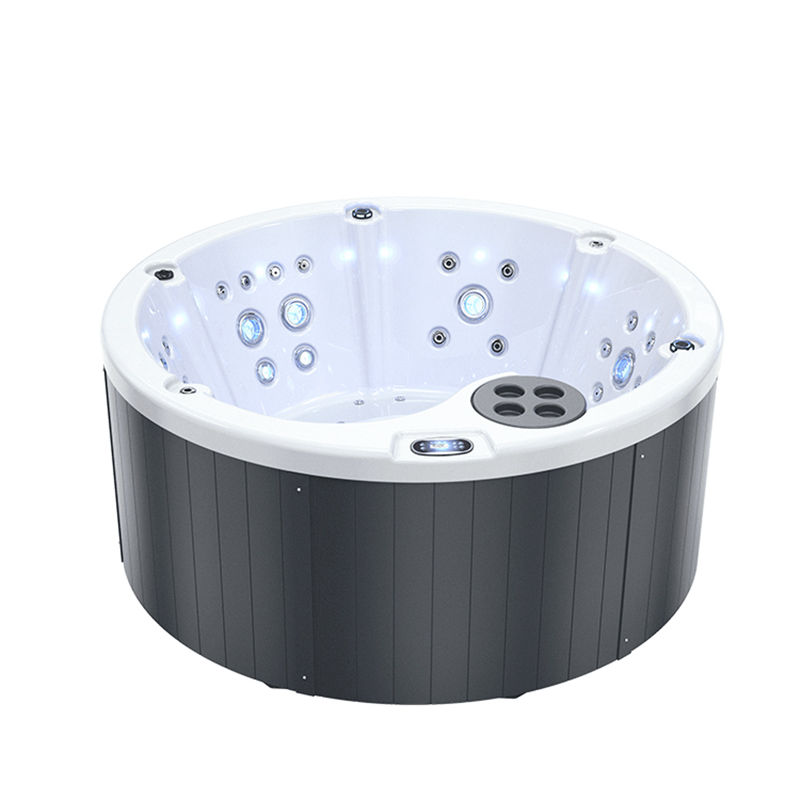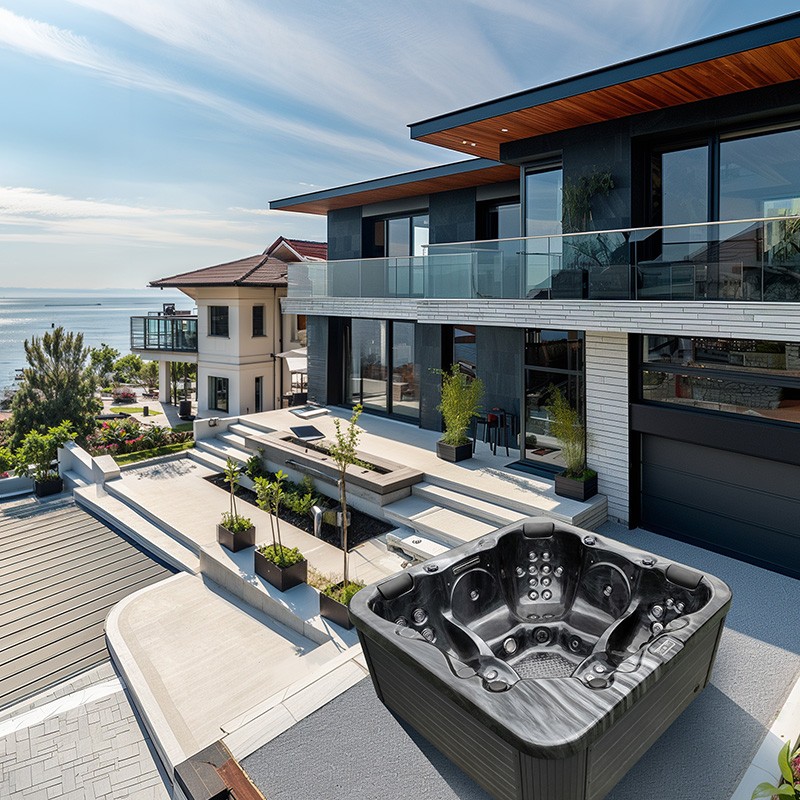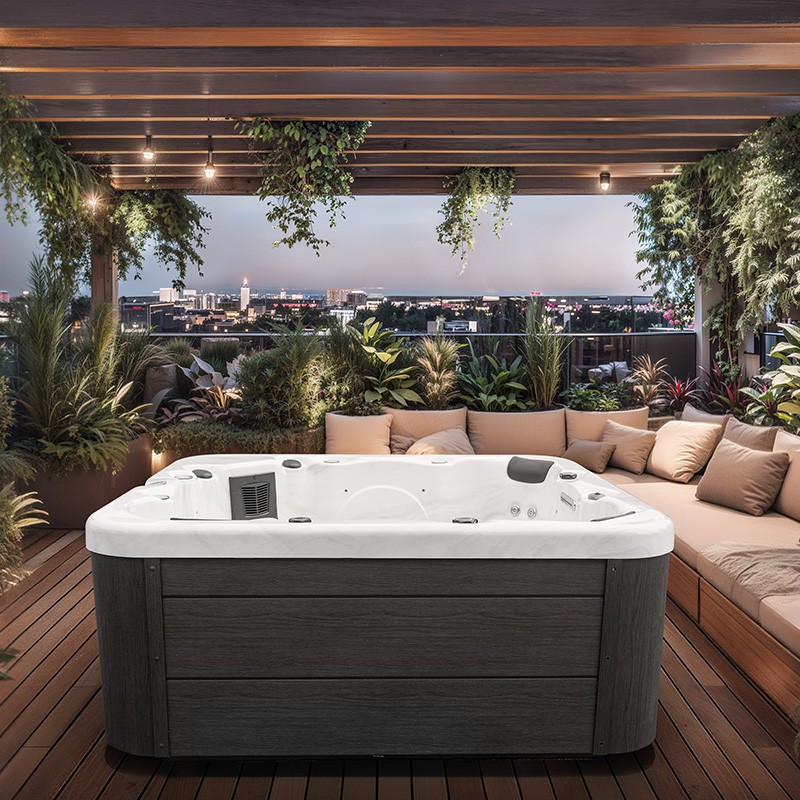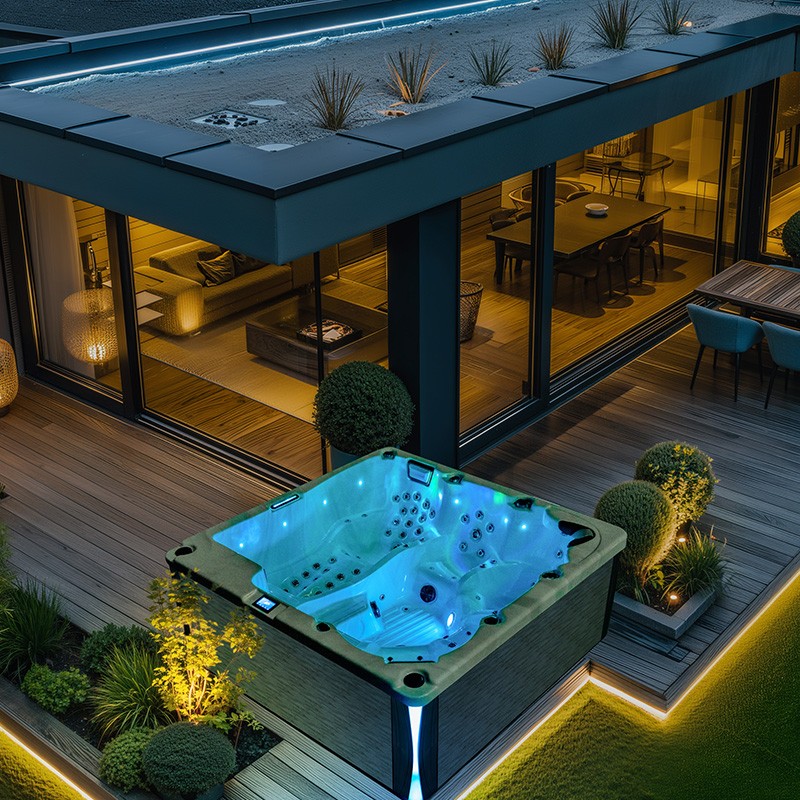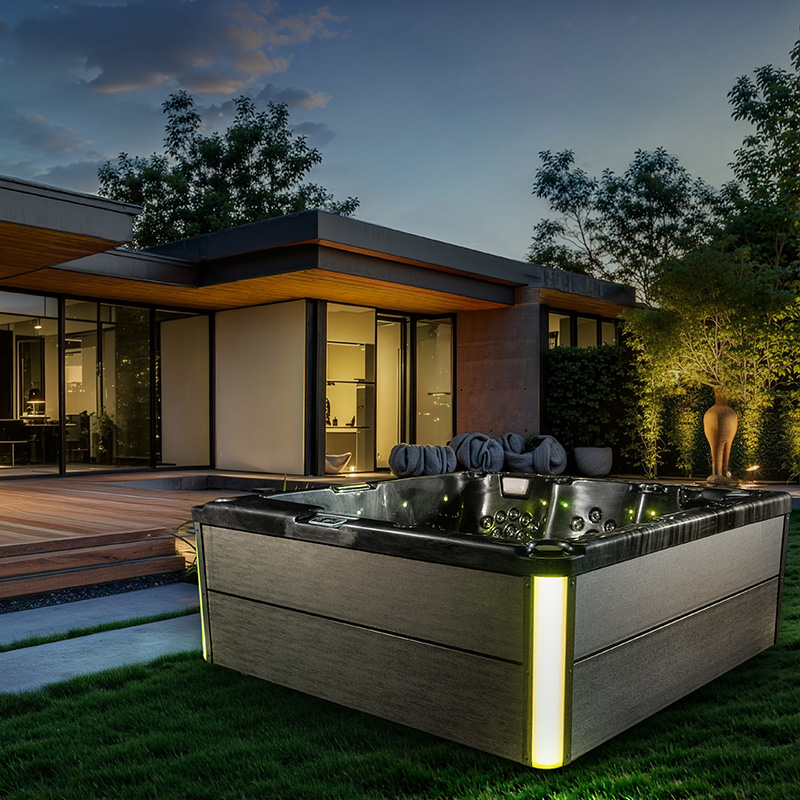The installation of an outdoor spa hot tub requires meticulous design and construction, involving multiple aspects such as electricity, drainage, and plumbing. Wiring layout is a crucial and often overlooked aspect. Especially in outdoor environments, wiring placement directly impacts safety and reliability.
So, should wiring for outdoor spa hot tubs be buried? This isn't just a question of aesthetics or practicality; it's also a crucial issue concerning safety regulations and long-term performance.
This article will delve into the necessity of burying wiring for outdoor spa hot tubs, focusing on safety regulations, cost considerations, and the steps involved. It will also provide systematic, practical guidance.
Outdoor spa hot tub: The necessity of burying wiring
Why should outdoor spa hot tub wiring be considered? Exposed wiring in outdoor environments poses multiple potential risks, including environmental exposure, mechanical damage, and contact safety. The following aspects help us understand why burying wiring is often the preferred option.
1. Safety
Safety is the primary consideration when routing outdoor electrical wiring. Outdoor spa hot tubs require electricity to operate properly, and the combination of water and electricity presents significant risks. Outdoor weather conditions are unpredictable, and heavy rain, snow, humidity, and strong winds can pose a threat to exposed wiring. If the wiring in an outdoor spa hot tub is not properly protected, it can lead to serious accidents such as short circuits, electric shocks, and even fires.
Burying wiring effectively reduces these risks. Underground wiring not only protects the wiring from wind and sun, but also prevents it from coming into direct contact with water and moisture, reducing the risk of leakage and electric shock. This is especially important for children and pets who might accidentally touch the wiring while outdoors.
2. Aesthetics and Space Management
Besides safety, burying wiring can also improve the cleanliness and aesthetics of your outdoor space. Exposed wiring not only affects the visual appearance but can also hinder people's enjoyment of the yard. Burying the wiring in an outdoor spa hot tub creates a cleaner space and prevents people from tripping over the wiring while using the tub.
Furthermore, improperly routed or exposed wires can complicate maintenance. Burying wires underground not only protects them but also reduces the hassle of dealing with tangles and other issues associated with them in everyday life.
3. Protecting against Mechanical Damage
Exposed wires in outdoor environments are susceptible to mechanical damage. For example, gardening tools, pruning equipment, and other outdoor activities can accidentally damage wires. Burying wires underground better protects against these potential external forces, extending the lifespan of your outdoor spa hot tub's wiring and reducing maintenance requirements.
Safety Regulations for Buried Wiring
Burying wiring is not only a practical and aesthetic option, but it is also subject to various safety regulations and electrical standards. Different regions may have specific regulations for outdoor wiring, designed to ensure the safety of electrical equipment and users. The following are some general wiring regulations that are generally applicable to outdoor spa hot tub wiring.
1. Type of Wiring
Wiring used outdoors must meet specific safety standards. Typically, wiring must be waterproof, corrosion-resistant, and UV-resistant to withstand the harsh outdoor environment. The National Electrical Code (NEC) in the United States and other relevant electrical codes in other regions clearly define the requirements for outdoor wiring. Common types of wiring for underground burial include direct-buried cable (such as UF-B cable) and wire installed in conduit (such as THWN cable).
Direct-buried cable (UF-B) typically does not require additional protective conduit for installation, while other types of wire (such as THWN) require sturdy PVC or metal conduit to protect the wires from soil pressure or damage from sharp objects.
2. Burial Depth
The burial depth of outdoor spa hot tub wiring is also a crucial safety requirement. Burial depth varies depending on the type of wire and installation method. Generally, direct-buried cables require a minimum of 18 to 24 inches (45 to 60 cm) underground. Conduit cables may require a shallower depth, but generally require at least 12 inches (30 cm).
Ensuring sufficient burial depth effectively prevents the risk of cables being damaged by digging up during construction or gardening.
3. Grounding and Protective Devices
Outdoor spa hot tub circuits must be equipped with a ground fault circuit interrupter (GFCI) or residual current device (RCD). This device automatically shuts off power when it detects a current leak, preventing electric shock. Furthermore, cables should be kept a safe distance from other water or gas pipes, typically at least 6 inches (15 cm), to prevent interference.
Cost Analysis of Buried Wiring
The cost of burying wiring for an outdoor spa hot tub primarily includes the material cost of the wiring, the labor required for installation, the cost of conduit or other protective measures, and any subsequent maintenance costs. Although burying wiring has a higher initial cost, it effectively reduces maintenance and safety hazards in the long run.
1. Material Cost
Buried wiring requires purchasing specific types of waterproof wire, such as UF-B or THWN cable. Furthermore, the use of PVC or metal conduit adds to the cost. Generally, direct buried cable costs between $1 and $3 per foot, while conduit costs range from $0.50 to $2 per foot, depending on the material.
Considering using conduit for your outdoor spa hot tub wiring will be more expensive, but it provides added protection. Conduit not only extends the life of the wiring but also makes it easier to replace or inspect the wiring if maintenance is needed.
2. Labor Costs
You can save some labor costs by burying your outdoor spa hot tub wiring yourself, but for most users, hiring a professional electrician is a safer option. A professional electrician can ensure that the wiring is laid in compliance with local safety regulations, preventing future safety issues.
Labor costs vary depending on local labor rates and the complexity of the project. Typically, an electrician's hourly rate ranges from $50 to $100. The entire installation process typically takes several hours to a day, depending on the length of the installation and the complexity of the site.
3. Maintenance Costs
Although burying wiring has a higher initial cost, it reduces future maintenance. Underground wiring protects against many external hazards, such as wind, UV rays, and physical damage, reducing the chance of the wiring corroding, aging, or damaging. In the long run, this approach can reduce equipment failures and repair costs.
Steps for Burying Outdoor Spa Hot Tub Electrical Cables
If you decide to bury your electrical cables, the following is a standard procedure to ensure proper installation while meeting all safety regulations.
1. Determine the Cable Path
First, plan the cable route. Try to choose a direct, unobstructed route, avoiding tree roots, rocks, or other areas that could obstruct the route. If the route crosses hard ground (such as concrete), you may need to use a trencher or other tool.
2. Dig a Trench
Dig a trench to the required depth based on the type of cable and safety regulations. If using direct burial cable, the trench should be at least 18 inches (45 cm) deep; if using conduit, the trench can be approximately 12 inches (30 cm) deep.
3. Install Cable or Conduit
Lay the cable directly in the trench, or thread the cable through PVC or metal conduit before placing it in the trench. The conduit joints should be securely sealed to prevent moisture from entering the cable.
4. Check the Cable Connections
Before burying the outdoor spa hot tub cables, ensure that all cable connections and plugs are properly insulated. Exposed connections may require protection with insulating tape or waterproof connectors.
5. Backfill the Trench
Backfill the trench and compact the soil. If the cables run through gardens or lawn areas, consider laying a protective net over them to prevent accidental digging.
How can I request a sales quote or place an order?
To request a quote, please contact our sales team via the corporate website or by email/phone. Provide model numbers, desired quantities, customization details, and your delivery port so we can prepare a Proforma Invoice. Our factory and sales representatives will calculate unit prices, estimated lead times, and shipping options.
We also handle purchasing negotiations for wholesale clients and can include discount tiers and promotions in the sales quote. If you require expedited service, mention it when requesting the quote so we can coordinate production and logistics accordingly.


